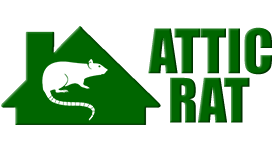Washoe County, Reno Rat Control Situation:
Which is easier to trap- mice or rats?
These are very confusing animals. They look the same and the only major distinction is that one is big while the other is very small. They are enemies; one will hunt down the other and destroy it.
How do you tell you are dealing with a mouse or a rat?
Rats are medium-sized rodents that are classified to be having a long and thin tail while a mouse is a small sized (sparrow-sized) rodent that also has a long but thin tail. Rats are different from the mice in several areas. They have genetic differences, morphological differences, growth differences, and anatomical differences. All this will help us know the real rodent and the ease of catching them.
Genetic differences
It is proven that the rats have 22 chromosomes but the house mice have 20 chromosomes. The genes of a rat have some counterparts while that of a rat has a genome.
Morphological differences
In general the rats are much stronger, larger and heavier than the house mice. The body parts of the rats are much developed than those of the mice.
Growth differences
The mice will generally take a shorter period of growth than the rats. Rats will generally take longer to develop than the mice. Rats' gestation takes an average of 24 days while the mice take 20 day.
Anatomical differences
Rats have six nipples while the mice only have a pair of five.
Which are easier to trap?
Without knowing what you are dealing with, it might be difficult to hold/capture the rodent. Now that we have looked the differences, we can now determine which is hard to trap.
Rats are very hard to trap believe it or not. This comes because of the fact that the mice are very curious to know about new things while the rats are cautious of the new things they find their way.
Therefore, the rats will tend to avoid the new things and therefore not be trapped easily. Mice go for it and get caught in the process.
Therefore, you need to unset the traps in the paths of the rats and place them in unusual places. For mice, you can just set the trap in the path and they will get caught. Therefore, rats are very hard to trap due to their curiousness.
Finally
Before embarking in any trapping, you need to first of all understand the kind of rodent you are dealing with. Then afterwards decide on the method of trapping to use.
Reno Rat Control Tip of The Week
How Can I Get Rid Of A Rat In My Bedroom?
Fill In Gaps And Cracks:
It's likely that there could be areas across your bedroom where rats can easily enter into your home. This could mean filling in cracks and gaps along the baseboard of your room or at the top of your room where the ceiling meets it. Filling in these gaps and cracks will make sure that a rat cannot enter and leave freely.
Remove Food:
If you regularly keep old plates and food in your bedroom it is important to remove these items and clean up your room as quickly as possible. More areas for rats to hide and more food sources will make sure that a rat will continually go back to that room.
Trim Overhanging Branches:
If you have branches that overhang to a window in your bedroom or hang close to the roof of your bedroom, you should trim them back as this can be a perfect way that rats can access your property.
Set Traps That Are Not Dangerous To Pets:
It's likely that you still want to have your pets in your bedroom so you will need to use a trap that is safe for your room and that will also be widely effective at catching rats. Making sure that you are using a safe trap to remove a rat is a great way to capture an animal that has been getting into your bedroom. Rats can spread poison easily so you should never consider using a poison trap, especially in the bedroom.
Remove Nesting Material Often:
If you find nesting material around your bedroom or in the walls, make sure that you are removing it often to discourage rats from breeding and setting up for a long time in your room.


